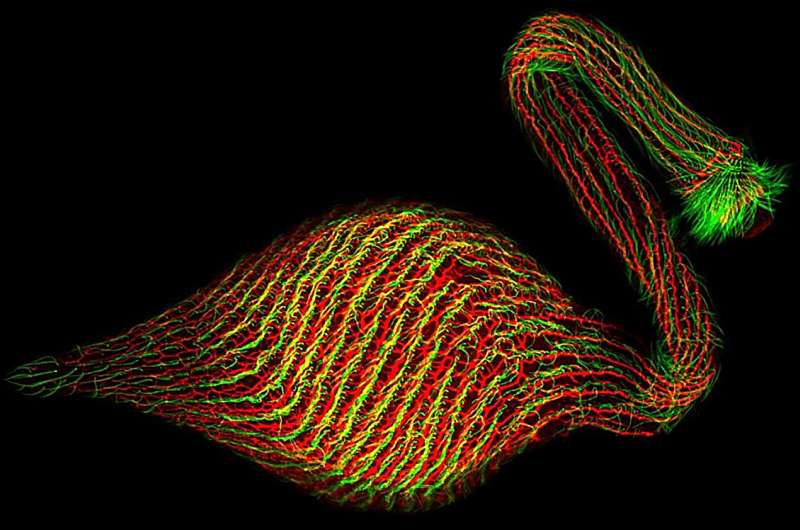Researchers from the Chinese Academy of Sciences have made a groundbreaking discovery about the remarkable shape-shifting capabilities of the single-celled eukaryote, Lacrymaria. This fascinating organism possesses a unique cytoskeletal system that allows it to extend its “cell neck” several times its body length to capture prey, showcasing astonishing elasticity and freedom of motion. The study, published in Current Biology, sheds light on the molecular mechanisms underlying this extreme morphological change, providing valuable insights for understanding cell movement and the evolution of cytoskeletal systems.

Unraveling the Mysteries of Lacrymaria’s Dynamic Shape-Shifting
The single-celled eukaryote Lacrymaria is renowned for its extraordinary ability to dramatically alter its shape and form. Unlike other eukaryotic cells that rely on the conventional calcium-dependent cytoskeletal system, Lacrymaria employs a unique actin-myosin system to achieve its remarkable shape-shifting capabilities.
According to the study led by Professor Miao Wei from the Institute of Hydrobiology at the Chinese Academy of Sciences, Lacrymaria’s remarkable morphological changes are driven by a specialized cytoskeletal system. This system consists of a myoneme cytoskeleton composed of centrin-myosin proteins and a microtubule cytoskeleton containing a novel giant protein. Additionally, the researchers discovered the presence of Plasmodium-like unconventional actin, which may form highly dynamic short filaments that facilitate the coordination between these two cytoskeletons, ultimately enabling Lacrymaria’s extreme cellular deformation.
Unlocking the Evolutionary Significance of Lacrymaria’s Cytoskeletal Innovations
The findings of this study are not only significant for understanding the mechanisms of cell movement but also shed light on the evolutionary diversity of cytoskeletal systems. As Professor Miao highlighted, this discovery of a novel cytoskeletal system in Lacrymaria is the second of its kind found in ciliates, following the earlier research on Spirostomum.
Ciliates, such as Lacrymaria and Spirostomum, are known for their remarkable cellular motility, making them excellent models for investigating the evolution and diversification of cytoskeletal systems. The unique cytoskeletal components and their intricate coordination uncovered in Lacrymaria suggest that eukaryotes have developed a wide range of specialized cytoskeletal systems to meet the diverse functional requirements of different cell types and environments. This study contributes to our understanding of the evolutionary pathways that have led to the remarkable diversity of cellular structures and behaviors observed in the eukaryotic domain.
Biomimicry Opportunities: Translating Lacrymaria’s Innovations to Microscale Robotics
Beyond the scientific significance, the findings of this study also hold exciting implications for future biomimetic designs in the field of microscale robotics. Lacrymaria’s ability to dynamically shape-shift and extend its “cell neck” to capture prey showcases remarkable engineering principles that could inspire the development of novel robotic systems operating at the microscale.
By unraveling the molecular and structural basis of Lacrymaria’s unique cytoskeletal system, this research paves the way for the design of bioinspired microscale actuators and mechanisms that mimic the extraordinary flexibility and mobility demonstrated by this single-celled eukaryote. The potential applications of such biomimetic innovations range from targeted drug delivery and minimally invasive surgical procedures to the development of highly maneuverable microrobots for environmental monitoring and exploration. As we continue to unlock the secrets of nature’s engineering marvels, the insights gained from Lacrymaria’s cytoskeletal adaptations can inspire groundbreaking advancements in the field of microscale technology.
